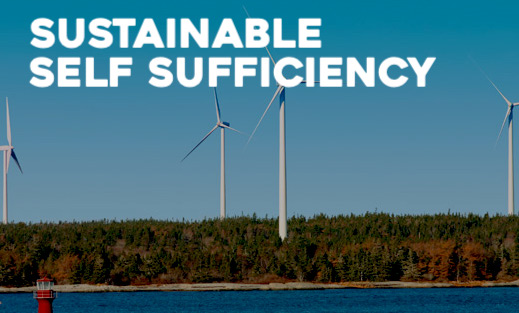First Published in the Chronicle Herald, December 12, 2020
It was recently announced that Alberta, the province at the heart of Canada’s fossil fuel industry, will retire it’s last coal-fired electricity plants seven years ahead of schedule, and add capacity using wind and solar alternatives. The reason isn’t government regulation or pressure from environmental groups, but saving money. Renewables are now cheaper than coal.
Meanwhile the latest Integrated Resource Plan for 2020, published a couple of weeks ago by Nova Scotia Power (NSP), confirms that Nova Scotia will continue to burn coal for the foreseeable future, potentially until 2040. This plan defies market realities and shows a lack of ambition for a province rich with renewable resources that could easily meet all our energy needs, while saving taxpayers billions of dollars and creating new jobs in the process.
Proponents of coal may argue that the plants already exist, or that rushing to replace them with alternatives will cost money that Nova Scotia ratepayers would have to absorb. This ignores the fact that all of Nova Scotia’s coal-fired power stations are near end of life and will require hundreds of millions of dollars in maintenance and upgrades to keep working another twenty years. It makes sense to spend that money upgrading our energy infrastructure to handle our future needs, when interest rates are at historic lows, rather than expensively patching up old clunkers only to have to replace them down the road.
Coal is famously one of the most carbon-intense forms of energy production, but it extracts a very high cost beyond pollution or price per ton. NSP will not reveal where it buys our coal from other than to say “world markets”, a euphemism for the lowest bidder, which may include nations with unsafe, unregulated mining operations and corrupt governments unfriendly to Canada and our values. Today, China is the world’s largest coal producer. In the Americas it’s Columbia and Venezuela.
Decades ago when the world was ignorant of the dangers of climate change, at least we mined coal locally, creating jobs and keeping energy investments in our own province. The average Nova Scotia household now spends $1500 on electricity per year and rising, burning most of that money on foreign fossil fuels of unknown origin while exporting a big slice of our economy. Those are hard earned dollars that leave Nova Scotia and never come back.
The good news is that this intolerable situation can be stopped. According to studies produced for NSP we are only using a third of the wind resources available. Many other studies including one recently produced by the University of Calgary, indicate that wind generation is much cheaper than coal, cost competitive with natural gas, and continues to get cheaper every year whereas all fossil fuel prices are projected to increase substantially.
Utility-scale batteries can be used to store energy for times when wind is not blowing and to balance the grid, another area in which Alberta has shown leadership. Named the eReserve, the first of three 20 mega-watt class storage plants near Peace River began construction in September, which when finished will be the largest utility battery in Canada.
If Alberta, a province with more than four times our energy needs and a much colder climate can replace coal with renewables, there really isn’t any reason why Nova Scotia cannot. We need to demand more from NSP, and join the leaders circle in sustainable energy economy. Sticking with coal will cost Nova Scotians much more, and keeps us dependent on dirty, foreign energy.


Leave a Reply